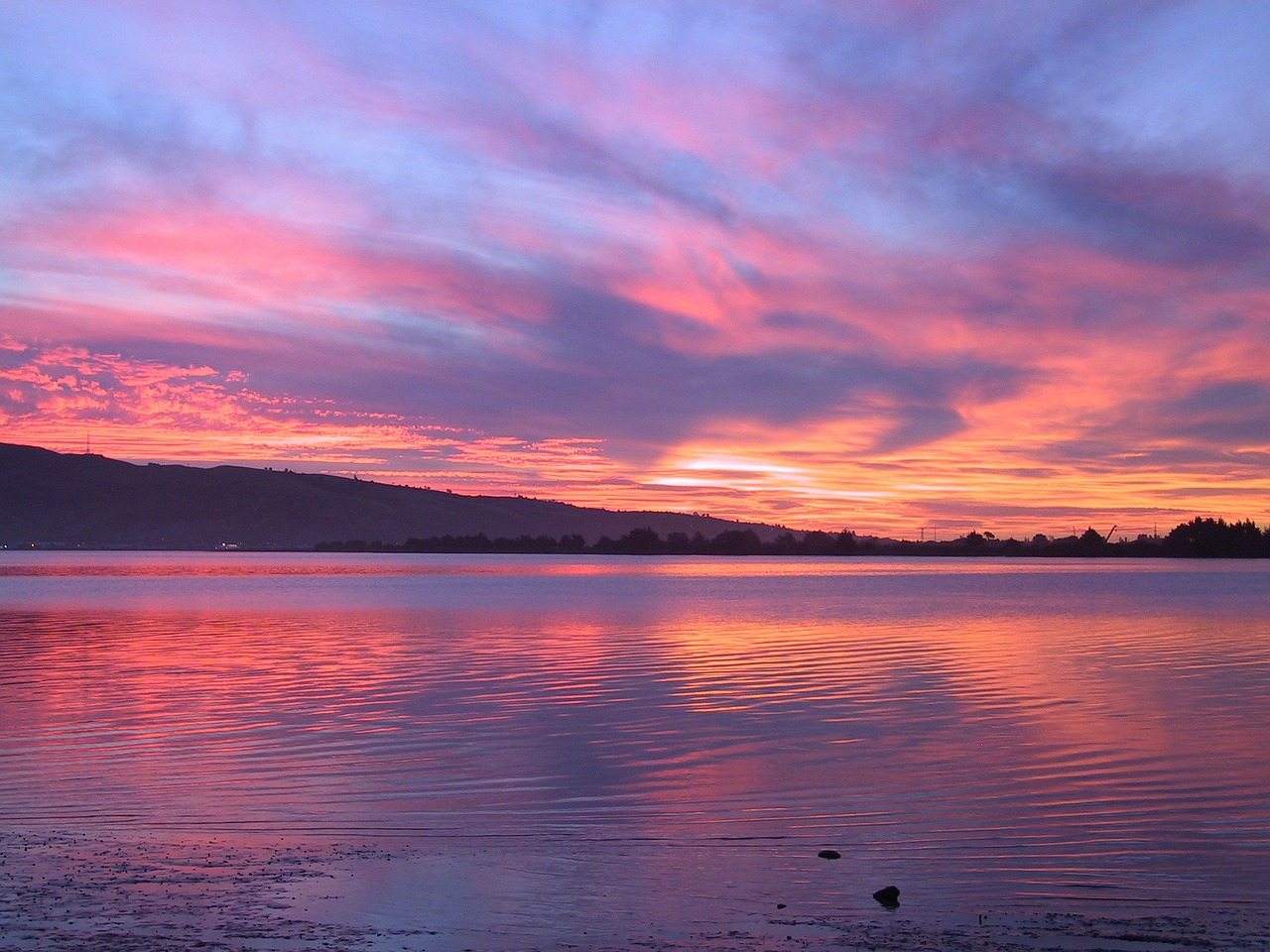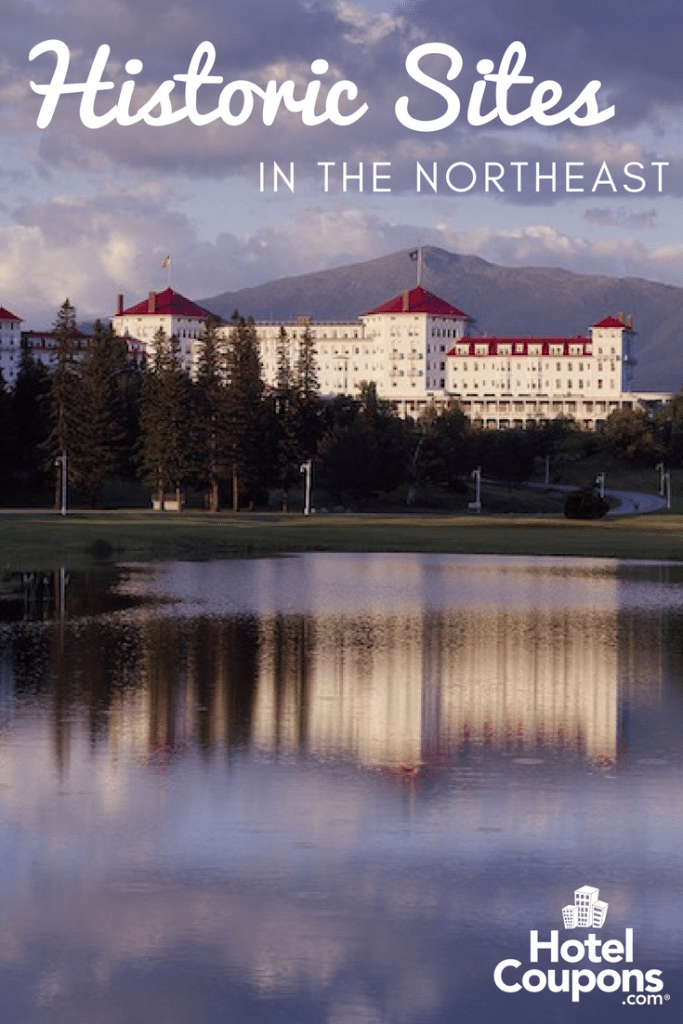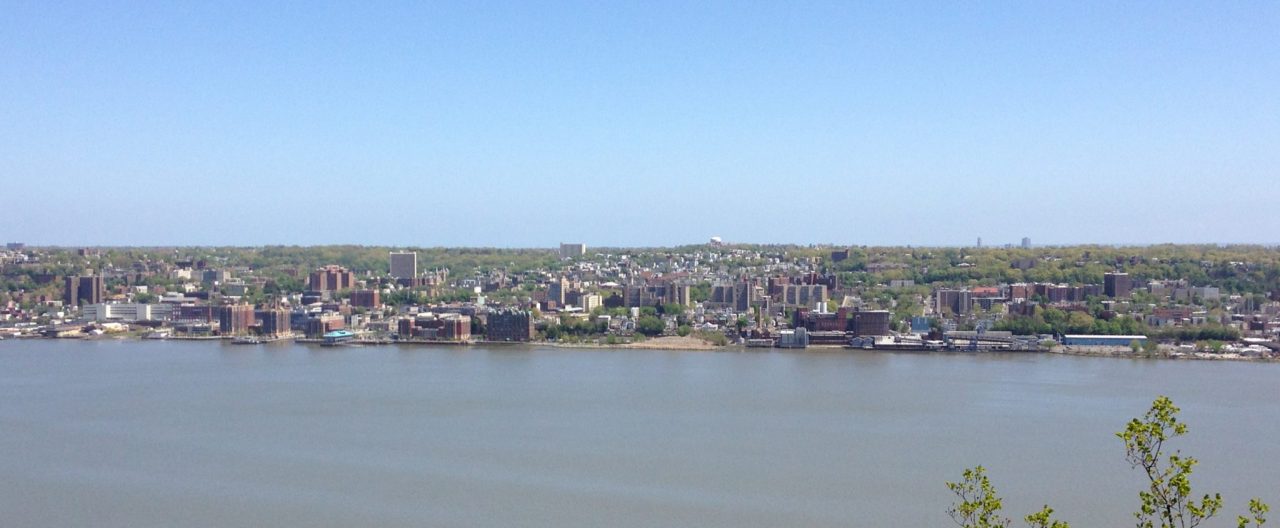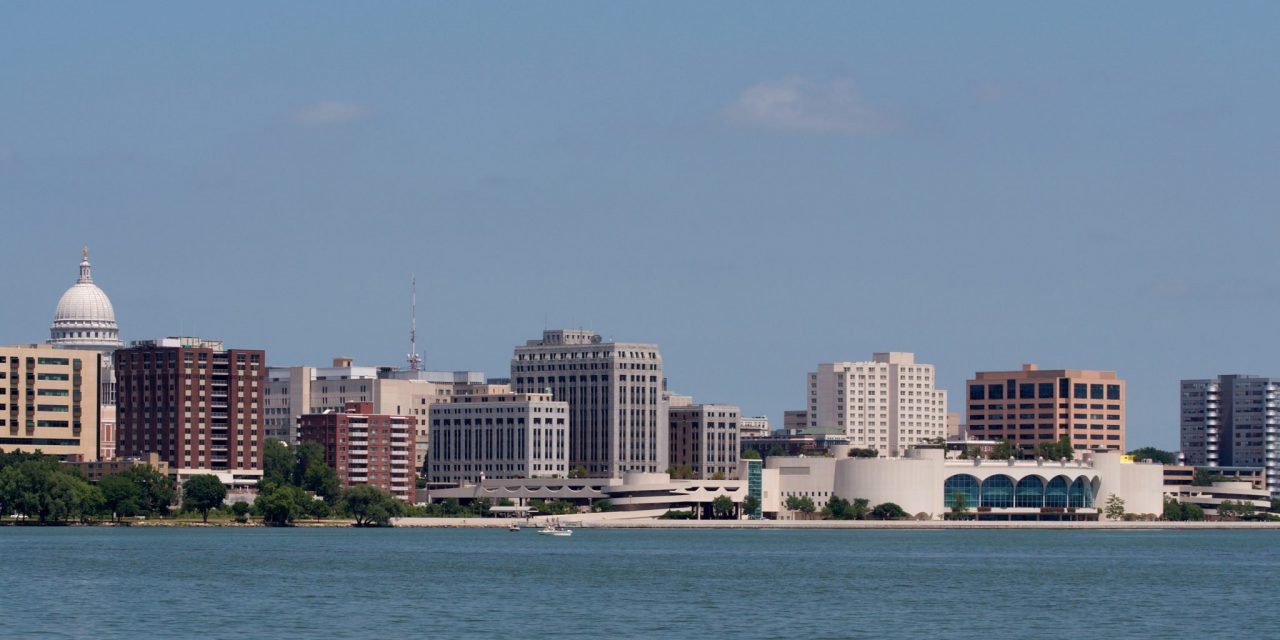When we think of the Northeast region of the United States of America, we think of the following states: Maine, New Hampshire, Vermont, Massachusetts, Rhode Island, Connecticut, New York, New Jersey, Pennsylvania, Delaware, and Maryland. A lot of history has happened here. There are forts and ships and battlefields to remind us of the unfolding saga of the United States. This article highlights historic buildings from each state that are evocative of the state they are in. Enjoy the tour.
Brunswick, Maine | Harriet Beecher Stowe House
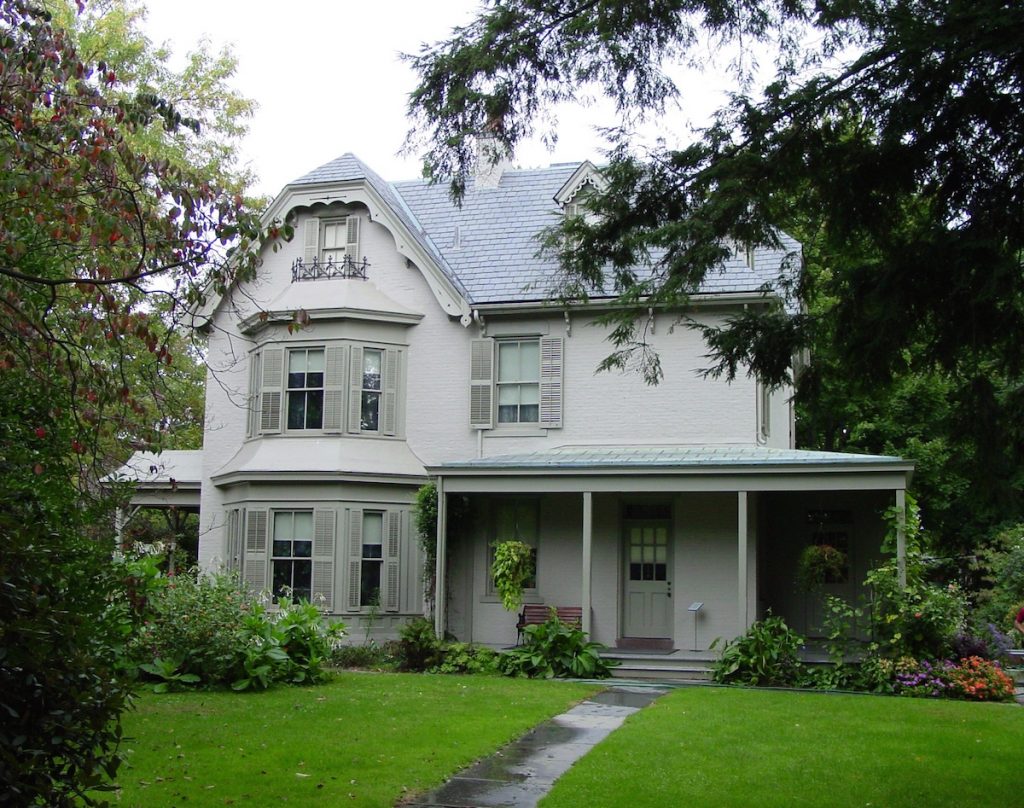
Why might you go to visit the home of a minister’s wife from the 1800’s? For a good reason; as Abraham Lincoln said upon meeting Mrs. Stowe, “You’re the little lady who started this great war.” He was referring to the blockbuster serialized novel that Harried Beecher Stowe wrote about the deplorable conditions of slavery, “Uncle Tom’s Cabin.” The sentiment in the book prompted the abolitionist movement and led ultimately to the Civil War. Harriet Beecher Stowe wrote the book here, in this house, which is still owned by Bowdoin College, today.
While tours are not offered, it is possible to see the home from the outside. From there you can go on to visit the First Parish Church nearby. There you will see Pew 23, where Mrs. Stowe sat when the concept for the novel came to her. It was during a communion service when she had a vision of the death of a slave. This then became the central element in her book. She was affected so deeply that she wept.
Bretton Woods, New Hampshire | Mount Washington Hotel
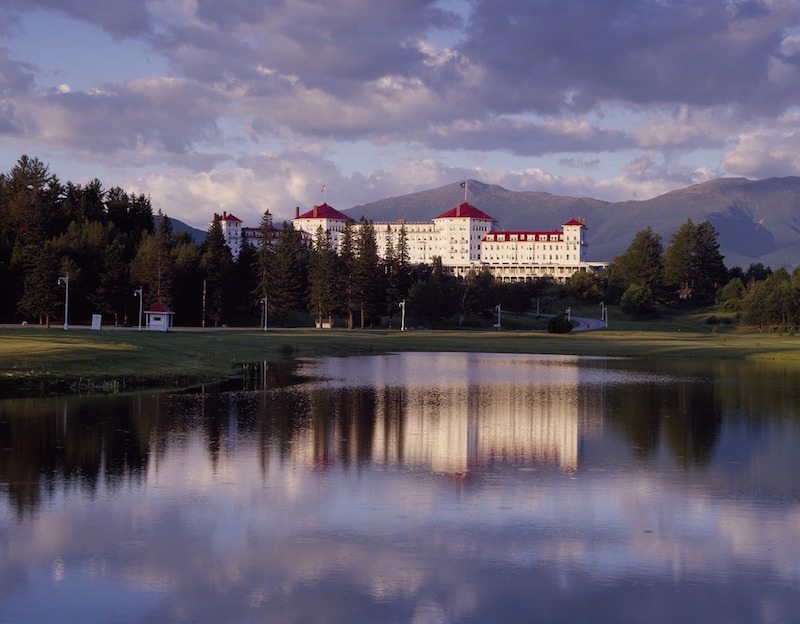
A stately hotel complex atop Mount Washington, with red roofs and subdued Mediterranean Revival architecture is the Mount Washington Hotel. It took two years to build, opened in 1902, and has been the host of presidents, poets, and celebrities ever since. It was also home to the Bretton Woods Conference. The conference is an international gathering of financial experts who put in place much of the financial system we use today. There are sweeping views of the mountains from the piazza. Inside more splendors await, from the white-columned lobby with its hewn stone fireplace to the round dining room. You are welcome to visit or to stay. If you have ever been to any of that late 20th-century
There are sweeping views of the mountains from the piazza. Inside more splendors await, from the white-columned lobby with its hewn stone fireplace to the round dining room. You are welcome to visit or to stay. If you have ever been to any of those late 20th-century grand hotels built at the location of the famous theme parks, this is one of the great hotels that they tried to emulate. But this one is an original.
Richmond, Vermont | Old Round Church
There may be other historic buildings to view in Vermont. However, none are as photogenic as this gorgeous and unusual round church. In its peaceful setting, the Church simply calls out to be visited. Despite the name, it is not technically round; it has sixteen sides. You will appreciate the beauty and simplicity of the architecture. Also, you’ll find a sense of serenity no matter your faith perspective.
Built between 1812 and 1814, the church was designated a National Historic Landmark in 1936. It is now maintained now by the Richmond Historical Society. The scale of the white-columned interior is both impressive and intimate, with its box pews, raised pulpit, and elaborate pastor’s chair.
Boston, Massachusetts | Old North Church

From this belfry the famous “One if by land and two if by sea” lantern signal was given so that silversmith and patriot Paul Revere and others could spread the news that “The British are Coming” to every Middlesex Village and Town on April 18, 1775. We are grateful to Longfellow for the poem, and glad that the congregation of Old North Church welcomes visitors’ as the follow Boston’s Freedom Trail.
Remember this is a church, in continuous use since its founding in 1723, so that while you are soaking in the history, you can also enjoy the record of the faithful who have worshiped here down through the centuries. Some of the pews bear historical markers commemorating who has worshiped there.
Coventry, Rhode Island | General Nathanael Greene Homestead
Known as Spell Hall, one of the famous generals who won the American Revolution lived here, from 1770 to 1776. The two and a half story clapboard house is open to tour as a museum, open to the public for tours starting April 1st until October 31st.
Here you can see the plainly furnished interior and hear the history of the Major General who built the house in the late 1800’s. The yellow library holds an original portrait of Nathaniel Green, as well as a collection of rare pottery. Don’t be surprised to see docents in period garb and the general and his lady’s clothes laid out of them on the four poster bed. Are there ghosts? You will have to find out for yourself.
Hartford, Connecticut | Mark Twain House
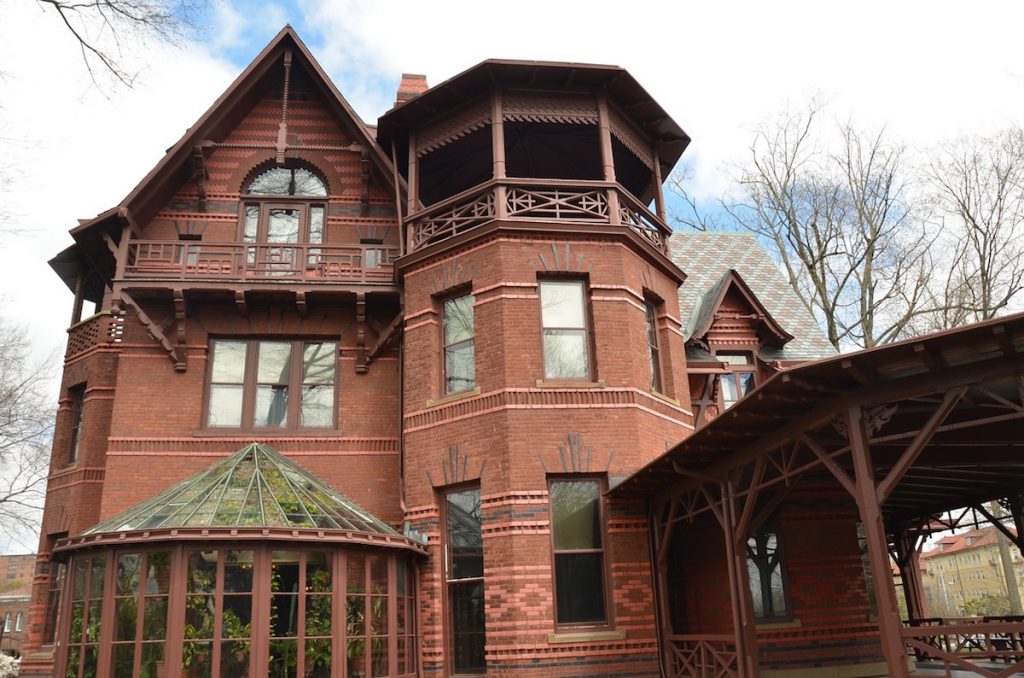
For a man from the center of the country, whose famous books take us along the mighty Mississippi, some might be surprised to find that Samuel Langhorne Clemens aka Mark Twain settled in this red brick Victorian mansion with towers and porches and a look of stately propriety. Samuel and Olivia “Livy” Clemens were married in 1870 and moved to Hartford in 1871.
In 1873‚ they hired New York architect Edward Tuckerman Potter to design this house. They lived in it until financial reverses and the death of their daughter Susan intervened. On the same site is the Webster Bank Museum Center. Here you can learn much about Twain and his writings. In addition, there is a permanent exhibition on Twain’s life and work; and a documentary about Twain by Ken Burns.
New York | Empire State Building
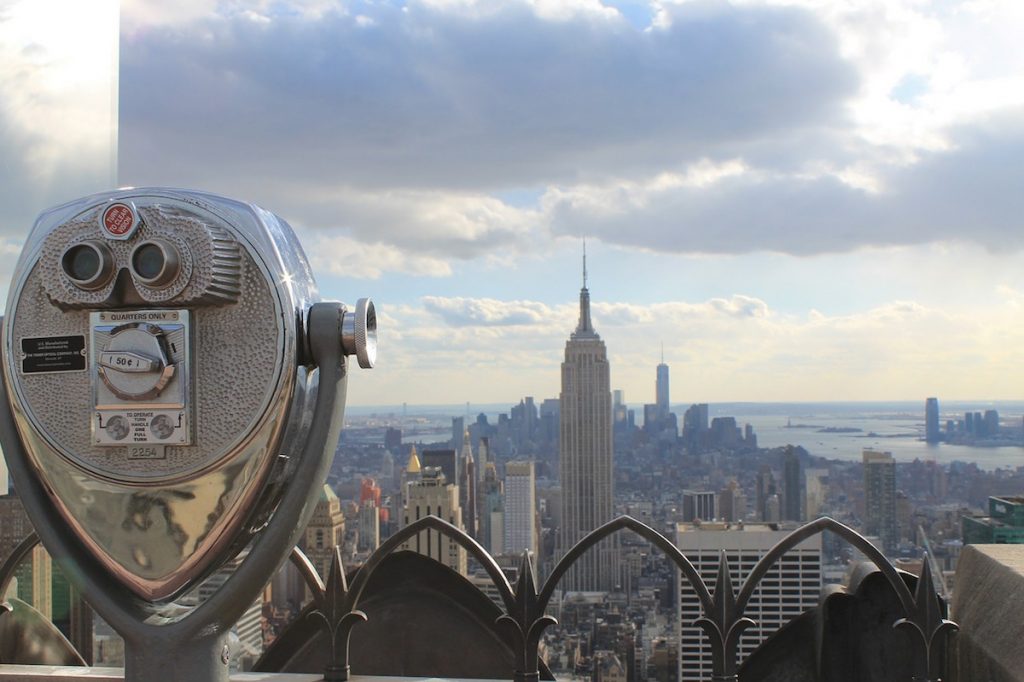
Arguably one of the most famous historical buildings in the world, as well as in the state and city of New York. For many years the tallest building in the world, at 102 stories, it still inspires. The building was built in the darkest days of the Depression. It is a brainchild of John J. Raskob and Pierre S. du Pont, and the creation of architect William F Lamb.
The Empire State Building soars over Manhattan, from which visitors can take in the view of the five boroughs, the Hudson and East Rivers, New York Harbor and points beyond. The subdued Art Deco style of the skyscraper still speaks to most visitors the message “This is what a tall building ought to look like.” The viewing platforms are open air, and not for the wobbly of knees. But everyone, who has seen An Affair to Remember and Sleepless in Seattle, knows that magical things have happened here, and still do. Be sure to admire the elevator door panels and the mural.
Margate City, New Jersey | Lucy the Elephant
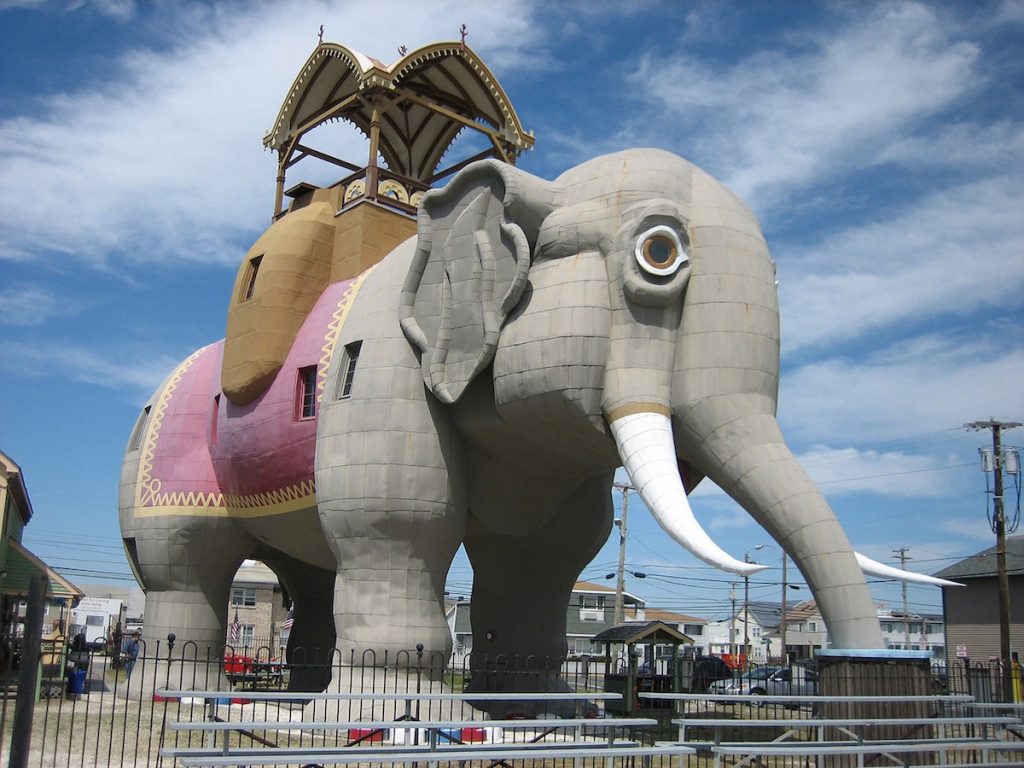
Can any building be more darling? Really. This is a beloved landmark along the Jersey Shore, and rightly so. Lucy was constructed of wood and tin sheeting in 1881 by James V. Lafferty to be a hotel at the beach, just two miles south of Atlantic City. She trumpeted her success in that regard. It is true that she is larger than life, but also on the petite size as far as hotels are concerned. Lucy is considered to be the oldest surviving roadside tourist attraction in the USA. She once had two sister elephant hotels also by Lafferty, but they no longer survive. In addition, Lucy is listed as the eleventh tallest statue in the United States.
Philadelphia, Pennsylvania | Independence Hall
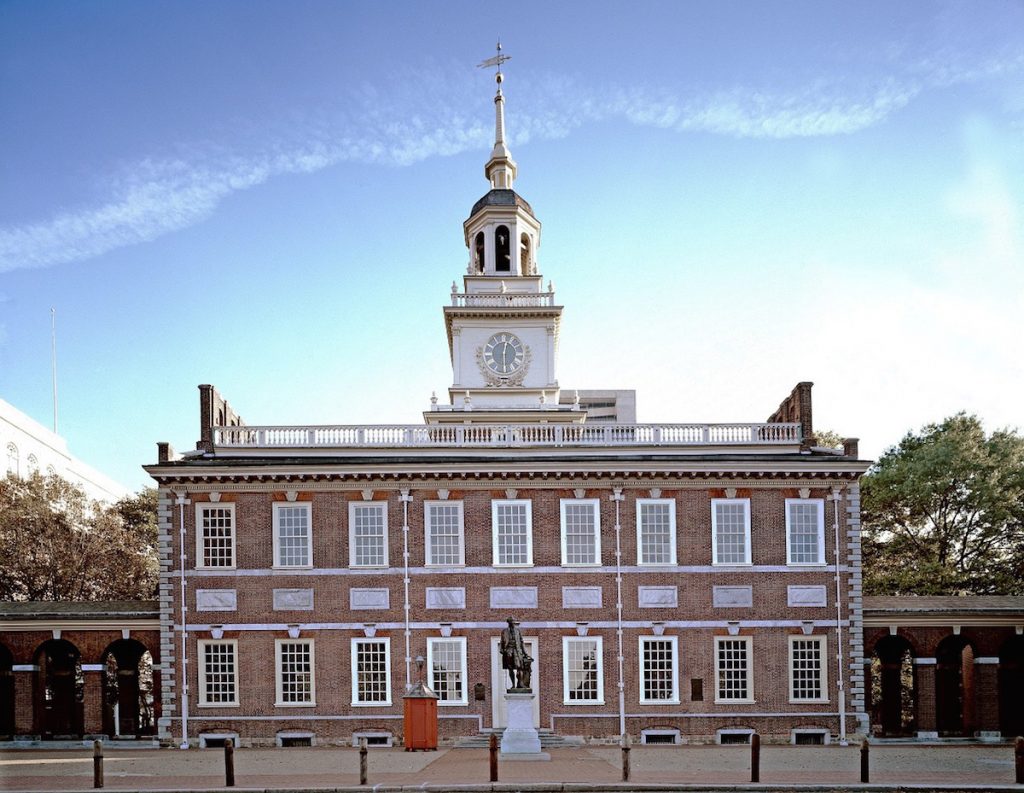
One of the most famous historical buildings in the world, Independence Hall was home to the second continental congress 1775 to 1783 and the location where both the Declaration of Independence and the Constitution (1787) were framed. It is therefore rightly called the cradle of liberty. It is a beautiful Christopher Wren-inspired red brick building dating to 1753, designed by Edmund Woolley and Andrew Hamilton.
To think that Ben Franklin, George Washington, Thomas Jefferson, John Adams and the other Sigers forged our nation here and that we can stand where they stood, is awe-inspiring to this day. Take the guided tour, beginning in the courtroom, see George Washington’s “rising sun” chair in the Assembly Room, arranged as it was during the Constitutional Convention. In the West Wing, the original inkstand used to sign the Declaration of Independence, and an original draft of the Constitution are on display.
Willmington, Delaware | Hagley Museum, and Library
This is a set of buildings preserving the site of the founding of the DuPont Company. Located on 235 acres along the banks of the Brandywine River, Hagley includes the gunpowder works opened by E. I. du Pont in 1802. The collection of buildings includes restored mills, a workers’ community, and Eleutherian Mills, the ancestral home, and gardens of the du Pont family. There is a café and museum store on site. There also zero other fine du Pont related places to visit in the area, including Longwood Gardens, Winterthur, and Nemours. Delaware is indeed a small wonder.
Annapolis, Maryland | Maryland State House
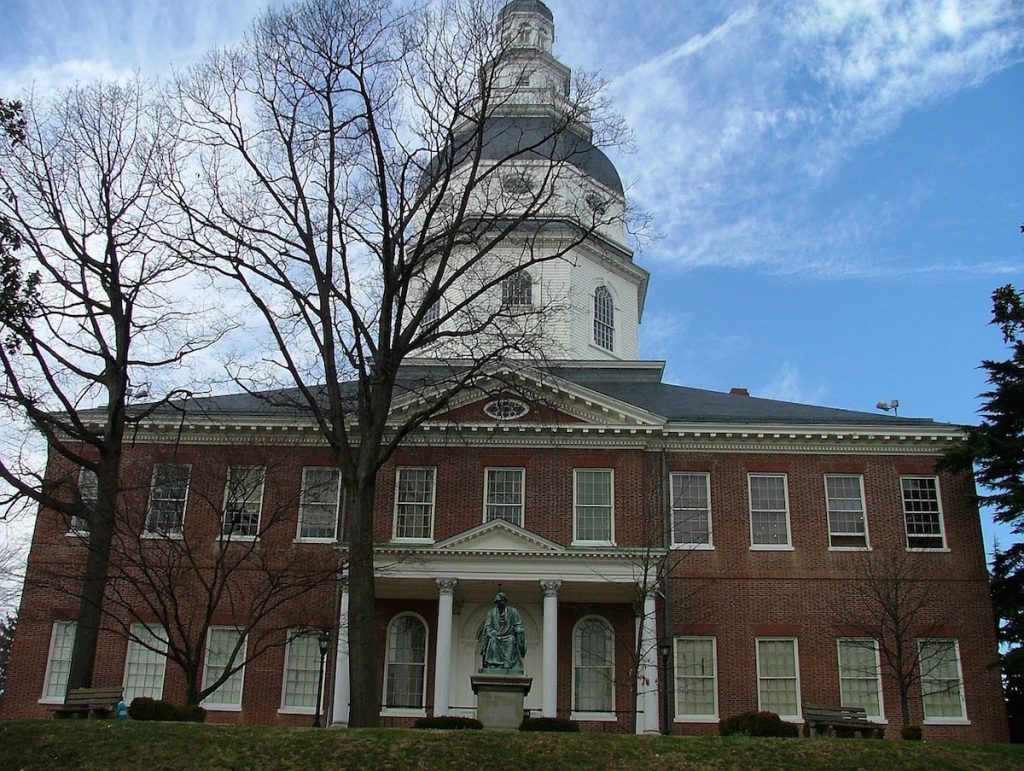
Ideally sited about the historic seaport city, the Maryland Statehouse is a game of the entire northeast. It is the oldest state house in continuous use, since 1772. The dome is the largest wooden dome in the USA constructed without nails. Along with the columned portico and the beautiful red brick, the architecture is dignified and impressive. In 1783, George Washington resigned his commission as commander in chief of the Continental Army, here in the Old Senate Chamber. The United States Congress met here from November 1783 to August 1784. And on January 14, 1784, the Treaty of Paris was ratified in this same room, officially ending the Revolutionary War.

